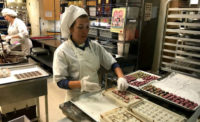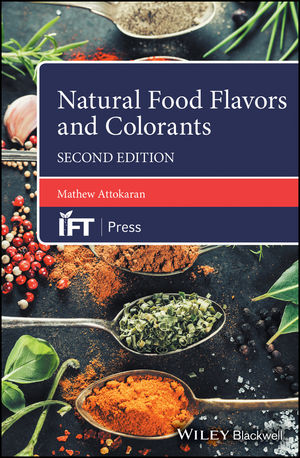With beautiful views and a passion for food, Portland, Ore. served as an ideal backdrop for Retail Confectioners International’s (RCI) Fall Regional Conference, held Sept. 17-19 at the Hilton Portland Downtown.
The gathering kicked off with a scenic bus tour Sept. 17 to the Columbia River Gorge, Multnomah Falls, the Bonneville Dam and to members of the Hood River Fruit Loop, a 35-mile loop featuring a consortium of growers, wineries and fruit stands at the base of Mt. Hood.
RCI visited the Mt. Hood Winery and sampled award-winning wines in its 10-year-old tasting room. Members also ventured into the vineyard to taste grapes fresh from the vine.
After a brief stop at the Apple Valley Country Store for pie, ice cream, jams and jellies, the group swung by The Gorge White House Fruit Stand & Winery to sample ciders and wines. Based in a 1908 Dutch Colonial house, the business also has fields of flowers from which visitors can pick bouquets.
Peter Kearns, v.p. of client solutions for 180Commerce, led off education sessions on Sept. 18 with “The Amazon Opportunity,” discussing how candy makers and other small businesses can make the most of selling through Amazon.
Kearns said nearly 45 percent of U.S. ecommerce sales came through Amazon in 2017, and they’re expected to swell to almost 60 percent by 2020. Amazon sales also accounted for 4 percent of all retail sales last year.
Kearns added that sales of smaller brands are catching up to legacy brands, noting that growth is “significantly weighted” toward smaller brands, especially if they have causes or ingredient standards that align with consumers’ passions and needs.
Randy Hofberger of R&D Candy Consultants, and Joe Sofia, senior account manager for Cargill, also walked through the process for developing caramel formulations based on different needs for flavor, stand-up ability and texture. Using Sofia’s caramel recipe and an Excel formulation template, they recalculated the amounts of each component needed to avoid graining and improve its stand-up ability.
They also went over Hofberger’s “rules” for developing a tasty, functional caramel. He suggested that formulations have 10 percent more syrup solids than sucrose solids to help prevent graining and 2.5-3 percent protein for good standup.
During the afternoon sessions, Polly Owen, director of the Hazelnut Industry Office, gave an overview of Oregon’s connection to hazelnuts. She said the state’s climate, rich volcanic soil and two main rivers — the Willamette and the Columbia — make for perfect hazelnut-growing conditions.
While Oregon grows two varieties of hazelnuts, the state has 70,000 acres in production. Owen said the growing area is expected to reach 80,000 acres by 2020, hinting that the hazelnut is poised for a boom in popularity among American consumers.
Following Owen’s overview, Rebecca Kuehn, a food scientist for Guittard, discussed why hazelnuts pair well with chocolate and how best to highlight hazelnuts’ sweet, buttery flavor. To illustrate her methods, she presented RCI members with four different confections:
- 61% Dark Chocolate Hazelnut Cluster
- 35% Milk Chocolate Hazelnut Cluster
- 61% Dark Chocolate Gianduja piece with a 40% hazelnut paste and 60% milk chocolate center
- 55% Dark Chocolate Hazelnut Praline Bite
Given hazelnuts’ high oil content, Kuehn recommended a two-step roasting process to reduce oil migration and maintain a confection’s intended textures. She suggested roasting hazelnuts for 30 minutes at 275 degrees, allowing the batch to cool completely and then roasting a second time for 15 minutes at 325 degrees.
To conclude RCI’s education sessions, Miriam Sontz, ceo of Portland’s famed Powell’s City of Books, discussed creating a successful retail environment.
The 40,000-sq.-ft. store has 3,000 transactions per day, with an average of 3.2 products per transaction. To achieve that level of sales, Sontz emphasized the need for employee support and customer service.
“Every person who walks through our door is a guest,” she said. “They need to be treated as such.
Sontz said businesses should never underestimate the intelligence of their customers or their employees, noting the ones in the trenches often have the best ideas on how to improve operations. She also pointed to creating an environment rooted in collaboration and respect.
On the final day, RCI members visited The Candy Basket, one of the largest candy companies in the Pacific Northwest. Founded in the 1930s by Dale Fuhr’s family, the chocolate business merged with Shorthill Taffy Factory in 1998 after business talks with Kipi Doran, who inherited the taffy business from her mother, turned romantic. The couple now create salt water taffy, chocolates and other treats in factory on Portland’s eastern edge. A 20-ft. chocolate fountain greets visitors as they arrive.
RCI members also stopped by Creo Chocolate, a bean-to-bar chocolate maker. Founded in 2014 by the Straub family — former strawberry and raspberry farmers — the company makes award-winning chocolate bars with cacao sourced directly from a farmer in Ecuador.
“We wanted to connect with the farmer,” Tim Straub said. “We used to be farmers. We want to treat people well.”
Creo Chocolate, along with Portland’s growers, makers and producers, treated RCI well, too.















